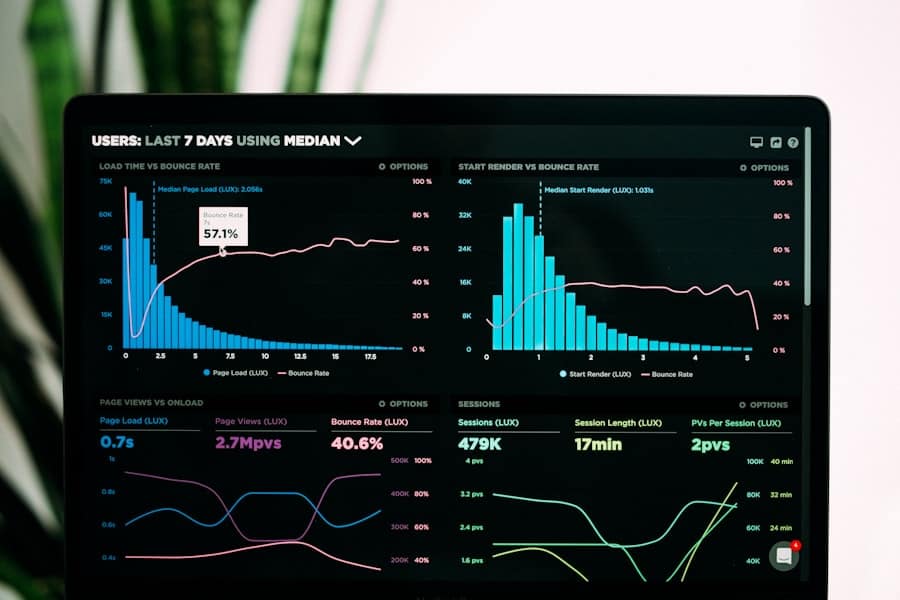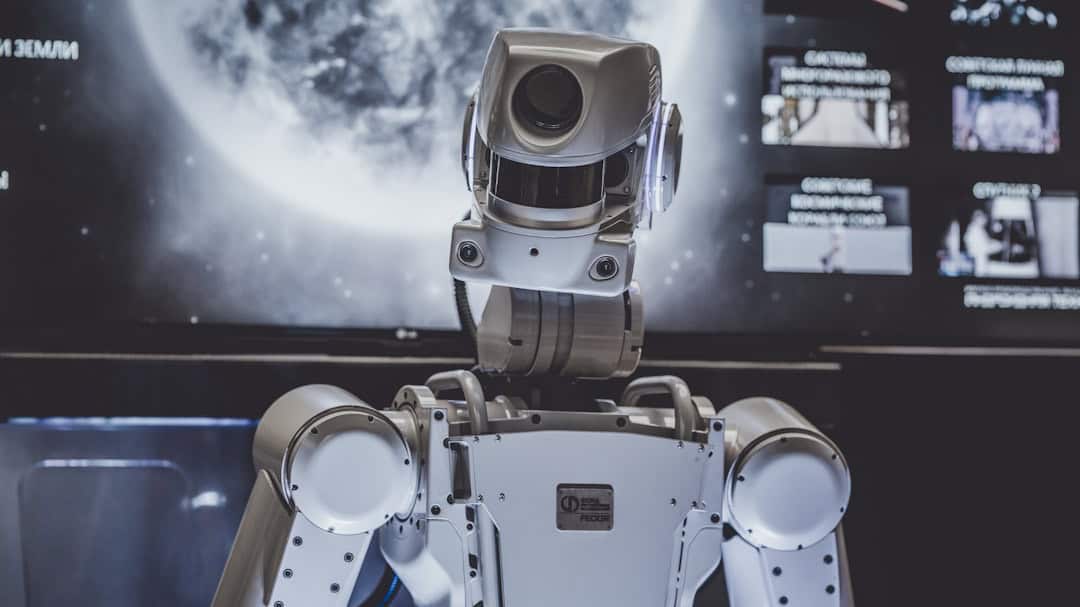Machine learning and artificial intelligence have become integral parts of our daily lives, from personalized recommendations on streaming services to virtual assistants on our smartphones. These technologies are revolutionizing industries and changing the way we interact with the world. Machine learning is a subset of artificial intelligence that focuses on the development of algorithms that can learn from and make predictions or decisions based on data.
It enables computers to learn and improve from experience without being explicitly programmed. This is achieved through the use of various techniques and models that allow machines to analyze and interpret complex data, identify patterns, and make decisions. Artificial intelligence, on the other hand, refers to the simulation of human intelligence processes by machines, especially computer systems.
It involves the development of algorithms that can perform tasks that typically require human intelligence, such as visual perception, speech recognition, decision-making, and language translation. Both machine learning and artificial intelligence have the potential to transform industries such as healthcare, finance, transportation, and many others. As these technologies continue to advance, it is crucial for professionals in the field to stay updated with the latest techniques and methodologies to harness their full potential.
Key Takeaways
- Machine learning and AI are revolutionizing industries by enabling computers to learn from data and make predictions or decisions.
- Grokking is a technique that involves deeply understanding and internalizing the workings of a concept or algorithm, rather than just memorizing it.
- Applying grokking techniques to machine learning algorithms can help practitioners gain a deeper understanding of how these algorithms work and how to improve their performance.
- By leveraging grokking, practitioners can improve model performance by fine-tuning hyperparameters, optimizing feature selection, and understanding the impact of different algorithms on their data.
- Grokking can be leveraged for AI applications such as natural language processing, computer vision, and robotics, enabling practitioners to develop more advanced and efficient AI systems.
Understanding the Basics of Grokking
Grokking is a term that originated from the science fiction novel “Stranger in a Strange Land” by Robert Heinlein, and it has been adopted in the context of computer science and machine learning to describe a deep understanding of something. In the context of machine learning, grokking refers to gaining a deep understanding of algorithms, models, and data to make better predictions and decisions. It involves not only understanding the mathematical and technical aspects of machine learning but also the intuition behind how algorithms work and how they can be applied to real-world problems.
Grokking techniques involve breaking down complex concepts into simpler components, understanding the underlying principles, and applying them in a practical manner. This approach allows practitioners to develop a holistic understanding of machine learning algorithms and models, enabling them to make informed decisions when designing and implementing solutions. Grokking also emphasizes the importance of experimentation and hands-on experience, as it is through practical application that one can truly internalize and master the concepts of machine learning.
Applying Grokking Techniques to Machine Learning Algorithms

When applying grokking techniques to machine learning algorithms, it is essential to start with a solid foundation in the fundamental concepts of machine learning. This includes understanding key algorithms such as linear regression, logistic regression, decision trees, support vector machines, neural networks, and more. Grokking these algorithms involves not only understanding their mathematical formulations but also their practical applications and limitations.
One effective way to grok machine learning algorithms is through visualization and hands-on experimentation. Visualizing how algorithms work and how they make predictions can provide valuable insights into their inner workings. Additionally, implementing these algorithms from scratch or using libraries such as scikit-learn or TensorFlow can help deepen one’s understanding of their implementation details and parameters.
Another important aspect of grokking machine learning algorithms is understanding how to select the right algorithm for a given problem. This involves understanding the characteristics of different algorithms, such as their bias-variance tradeoff, scalability, interpretability, and suitability for different types of data. By grokking these aspects, practitioners can make informed decisions when choosing and fine-tuning machine learning models for specific applications.
Improving Model Performance with Grokking
| Metrics | Before | After |
|---|---|---|
| Accuracy | 0.85 | 0.92 |
| Precision | 0.78 | 0.86 |
| Recall | 0.82 | 0.89 |
| F1 Score | 0.80 | 0.88 |
Grokking techniques can be instrumental in improving the performance of machine learning models. This involves gaining a deep understanding of model evaluation metrics, feature engineering, hyperparameter tuning, and model selection. By grokking these aspects, practitioners can optimize their models for better predictive performance and generalization to unseen data.
Understanding model evaluation metrics such as accuracy, precision, recall, F1 score, and area under the ROC curve is crucial for assessing the performance of machine learning models. Grokking these metrics involves understanding their mathematical definitions, their interpretation in different contexts, and their implications for model performance. Feature engineering is another area where grokking techniques can be applied to improve model performance.
This involves creating new features from existing data that can enhance the predictive power of machine learning models. Grokking feature engineering involves understanding the domain knowledge behind the data, identifying relevant features, and transforming them in a way that captures meaningful patterns and relationships. Hyperparameter tuning is also a critical aspect of improving model performance, as it involves finding the optimal set of hyperparameters for a given algorithm.
Grokking hyperparameter tuning involves understanding the impact of different hyperparameters on model performance, as well as techniques such as grid search, random search, and Bayesian optimization for finding the best hyperparameter values.
Leveraging Grokking for AI Applications
Grokking techniques can be leveraged for a wide range of AI applications across various industries. In healthcare, for example, grokking can be applied to develop predictive models for disease diagnosis, patient outcome prediction, and personalized treatment recommendations. By gaining a deep understanding of medical data and machine learning algorithms, practitioners can develop AI solutions that have a meaningful impact on patient care and healthcare outcomes.
In finance, grokking techniques can be used to develop predictive models for stock price forecasting, fraud detection, credit risk assessment, and algorithmic trading. By gaining a deep understanding of financial data and machine learning algorithms, practitioners can develop AI solutions that provide valuable insights for investment decisions and risk management. In transportation, grokking techniques can be applied to develop AI solutions for traffic prediction, route optimization, autonomous vehicles, and predictive maintenance.
By gaining a deep understanding of transportation data and machine learning algorithms, practitioners can develop AI solutions that improve safety, efficiency, and sustainability in transportation systems.
Advanced Techniques for Mastering Machine Learning with Grokking

To master machine learning with grokking techniques, practitioners can explore advanced topics such as deep learning, reinforcement learning, natural language processing, computer vision, and generative adversarial networks. Deep Learning involves training neural networks with multiple layers to learn hierarchical representations of data, making it suitable for complex tasks such as image recognition and natural language processing. Reinforcement learning is a type of machine learning where an agent learns to make decisions by interacting with an environment to maximize cumulative rewards.
This technique has applications in robotics, game playing, autonomous systems, and recommendation systems. Natural language processing (NLP) focuses on enabling computers to understand, interpret, and generate human language. NLP techniques such as sentiment analysis, named entity recognition, and machine translation have applications in chatbots, virtual assistants, content analysis, and information retrieval.
Computer vision involves enabling computers to gain high-level understanding from digital images or videos. Computer vision techniques such as object detection, image segmentation, and image classification have applications in autonomous vehicles, medical imaging, surveillance systems, and augmented reality. Generative adversarial networks (GANs) are a class of machine learning systems where two neural networks compete with each other to generate realistic samples.
GANs have applications in image generation, style transfer, data augmentation, and anomaly detection.
Conclusion and Future Developments in AI and Machine Learning with Grokking
In conclusion, grokking techniques play a crucial role in mastering machine learning and artificial intelligence. By gaining a deep understanding of algorithms, models, data, and advanced techniques through visualization, experimentation, and practical application, practitioners can develop AI solutions that have a meaningful impact across various industries. Looking ahead, future developments in AI and machine learning with grokking are likely to focus on areas such as explainable AI, ethical AI, federated learning, automated machine learning (AutoML), and AI governance.
Explainable AI aims to develop transparent and interpretable AI systems that can explain their decisions to end-users in a human-understandable manner. Ethical AI focuses on developing AI systems that are fair, accountable, transparent, and respectful of privacy and security considerations. Federated learning enables training machine learning models across decentralized devices while keeping data local, addressing privacy concerns in AI applications.
Automated machine learning (AutoML) aims to automate the process of designing machine learning models by automatically selecting algorithms, feature engineering methods, hyperparameters, and model evaluation metrics based on the given data. AI governance focuses on developing policies and regulations for the responsible development and deployment of AI systems across different sectors. By addressing these challenges and opportunities with grokking techniques at the forefront, we can continue to advance the capabilities of AI and machine learning for the benefit of society as a whole.
If you’re interested in exploring the impact of technology on our world, you might also enjoy reading about the significance and impact of the metaverse. This article delves into the potential economic and social impacts of the metaverse, as well as its implications for real-world conferences and events. Check it out here.
FAQs
What is machine learning?
Machine learning is a subset of artificial intelligence that involves the development of algorithms and statistical models that enable computers to improve their performance on a specific task through experience, without being explicitly programmed.
What are the different types of machine learning?
There are three main types of machine learning: supervised learning, unsupervised learning, and reinforcement learning. Supervised learning involves training a model on labeled data, unsupervised learning involves finding patterns in unlabeled data, and reinforcement learning involves training a model to make sequences of decisions.
What are some common machine learning algorithms?
Some common machine learning algorithms include linear regression, logistic regression, decision trees, random forests, support vector machines, k-nearest neighbors, and neural networks.
What are some real-world applications of machine learning?
Machine learning is used in a wide range of applications, including recommendation systems, natural language processing, image and speech recognition, medical diagnosis, financial forecasting, and autonomous vehicles.
What is the difference between machine learning and deep learning?
Deep learning is a subset of machine learning that uses neural networks with multiple layers to learn from data. It is particularly effective for tasks such as image and speech recognition, and natural language processing.











Leave a Reply